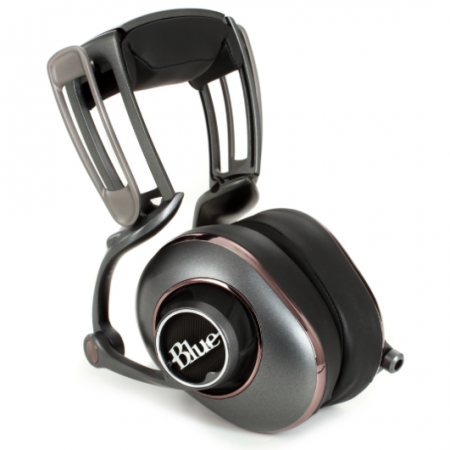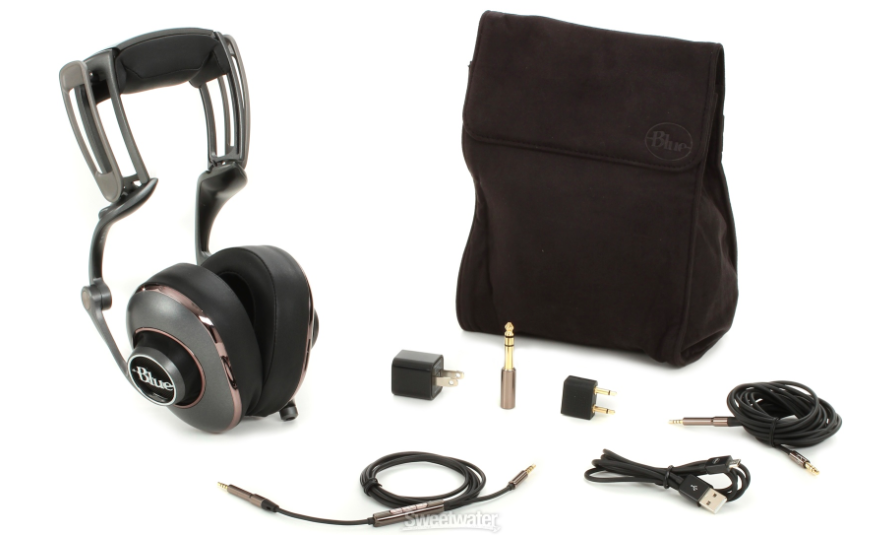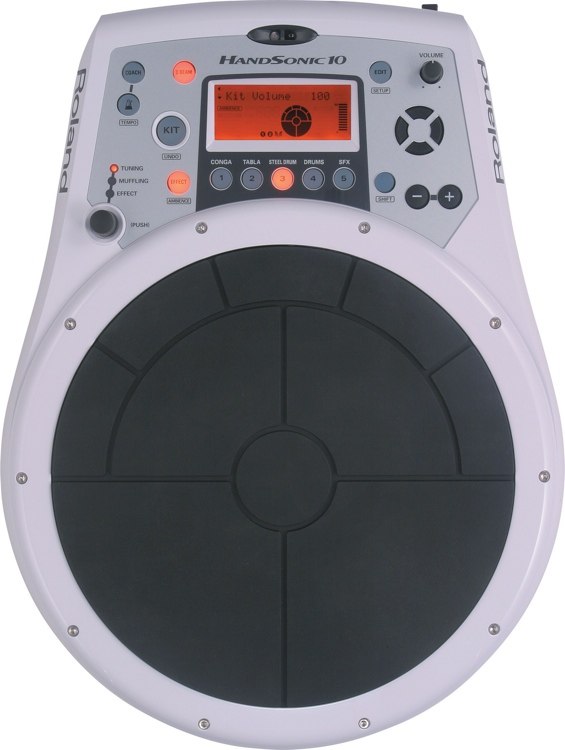Hands-On Review: Blue Mo-Fi

Blue is well known for crafting excellent microphones that each carry their own cool twist; they look unique, they sound unique, and they’re must-haves for any mic locker. So it’s no surprise that when Blue announced that they were releasing headphones, that they would take a unique approach to that as well! The result is Mo-Fi headphones, which create an entirely new category: active headphones. As with their microphones, Blue was not content to follow the status quo; months of engineering went into designing a headphone that not only looks unique, but that offers amazing ergonomics as well as killer sound.
I was fortunate to receive an advance set of Mo-Fis a few days before they were officially released. I took them into my studio for a real-world ears-on music production test, and spent time with them jacked into my laptop and iPad for more casual music making and leisure listening. The first thing I’ll say is that the packaging the headphones arrive in is beautiful — definitely stylish and attractive, but equally (perhaps more) important, easy and fast to open so that nothing slows you down from getting the phones on your ears! A short manual is included that gives you the quick start guide of all the features of the Mo-Fis. Let’s take a tour of the Mo-Fis, then I’ll give you my thoughts on how they sound in the studio and in the living room.
Actively Amped
The “active” part of the Mo-Fis is an audiophile-quality amplifier that’s built into the headphones. You can use the Mo-Fis in “passive” mode — there’s a three-position switch on the left ear cup for setting this. In passive mode, the Mo-Fis work like regular headphones, using the headphone amp in your source device (computer, audio interface, iPod, whatever). When you switch to “On,” the Mo-Fi’s built-in amp kicks in. It’s a high-power amp that easily drives the ‘phones 50-mm fiber-reinforced dynamic drivers to extremely high volume levels. Great for drummers or tracking in front of a loud guitar amp, but high volume isn’t really the point; rather, all that power provides massive headroom for maximum dynamic response at reasonable listening levels. There is a noticeable difference in the audio quality when you kick to the “on” position of the switch. In passive mode, the Mo-Fis sound great, but with the amp engaged, the sound is clearer and more dynamic, the soundstage opens up, and the bass fills out for a more speaker-like reproduction.
The third position on the ear cup switch is “on+.” In this mode, the built-in amp is active, and the bass is enhanced. Don’t worry, we’re not talking an extreme “boom” experience, here. In plus mode it’s almost as if the headphones extend down lower in frequency, with more prominent low-end response. It’s a nice option to have, especially if your playback device is a little anemic in the bottom end, or if you’re listening to older tracks that don’t have the bottom end we expect from modern productions.
Maximum Articulation
Every detail of the Mo-Fis was scrutinized and examined during the design process; Blue went through an incredible series of design steps to come up with the ergonomic headband and ear cup support system. Rather than a standard straight band, the ear cups are mounted to two articulating arms that extend from the fixed top section of the headband. This solves a real problem: with standard headphones, as the ear cups are moved out to accommodate a larger head, they start to angle away from the listener’s ears — they’re actually swinging up as they go out. With the Mo-Fi’s articulating arm system, the ear cups move straight out, parallel to the listener’s head, no matter how far you extend them. So even if you have the world’s most massive noggin, the ear cups will still be positioned perfectly. You can also rotate the ear cups to further accommodate your head shape, and there’s even an adjustment at the top of the headband for the amount of tension or pressure applied by the phones. The head band and the ear cups are padded with quite thick memory foam that will shape to your skull, and will even shape around eyeglasses. So even though the Mo-Fis aren’t the lightest headphones on the market, they are some of the most comfortable. I used them for several extended listening sessions, and found them easy to wear; they basically disappear once you get them on and adjusted.
Likewise, the Mo-Fis aren’t the smallest phones on the market; especially in today’s earbud-centric world. I probably won’t be wearing them while jogging or grocery shopping. But I really don’t care about that. For me, these are studio and critical-listening phones, and high-quality “immersion in the sound” phones. They are a closed-ear design, so they isolate very well from both external sound getting in and internal sound getting out.
Other Nice Touches
The Mo-Fis charge up using a USB connection. They come with a small AC charger or can be charged from a computer or other USB device that can provide power. They arrived charged out of the box, and will run around 12 hours before needing a recharge. A full recharge took about three hours. To help save battery power, the Mo-Fis automatically shut off when you remove them from your head and the ear cups touch together — a very cool feature. Each ear cup has a built-in LED that indicates full charge (steady glow), rapid blink (15% or less battery left), slow blink (charging), and off (power off).
The Mo-Fi cable is removable, which allows for easy field replacement — vital in the studio. Two cables come in the box: a shorter 1.2-meter cable with Apple iPad/iPod/iPhone controls, and a longer 3-meter standard cable. Both cables have 1/8-inch connectors, but a 1/4-inch adapter is included, as is a 2-prong airplane adapter. A nice soft carrying bag, which accommodates both the phones and the cables, comes with the Mo-Fis.

Performance
In a word, the Mo-Fis sound great. With a source such as a computer, MP3 player, or other “consumer” level audio output device, the active amplifier makes a substantial difference compared to relying on the less-than-ideal headphone amps commonly found in those devices. It’s like taking a veil off the music and unleashing the dynamics, clarity, and quality that lurk within.
In the studio, I compared the Mo-Fis to four other well-known studio-standard sets of phones. As you’d expect, all these phones sound different, but to my ears, the Mo-Fis offer a balanced reproduction across the frequency spectrum; some other phones sound slightly scooped in the mids and sizzly on top compared to the more even-response Mo-Fis. I listened for several hours to high-definition tracks, comparing nuances between phones, and universally found that the Mo-Fis provided outstanding detail, and especially good midrange clarity, with tight, full natural sounding bass. The isolation is good for tracking, and there’s way more volume on tap than you’ll ever need.
Wrap Up
With the Mo-Fis, Blue has created a brand-new type of headphone, but this isn’t just an exercise in “different for different’s sake.” Rather, the active headphone approach provides valid benefits in dynamics, headroom, clarity, low-end extension, volume capability, and stereo imaging. For consumer devices, Mo-Fi is a no-brainer; it instantly elevates the quality of playback. For the studio, the isolation and sound quality make them an ideal second reference along with your trusty studio monitors, an excellent tracking solution, or even a great choice as primary mixing headphones if you can’t always use monitors in your studio situation.










